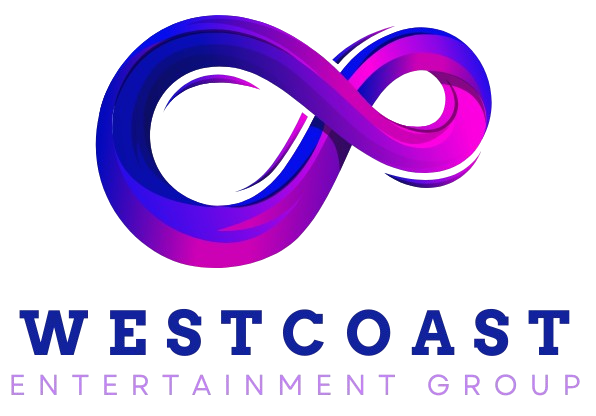Boost Your Sales with Meta Ads: A Guide to Effective Digital Marketing Strategies
In the ever-evolving world of digital marketing, mastering the art of meta ads can be a game-changer for boosting your business sales. As businesses strive to connect with their target audience, leveraging targeted advertising on social media platforms can be the key to reaching specific demographics with tailored messages. By customizing your approach, you not only increase your visibility but also enhance conversion rates by engaging users who are primed to purchase. With the power of advanced analytics and performance tracking, businesses can refine their strategies continuously, ensuring that every ad dollar spent contributes to building customer loyalty. Dive into this guide to unlock the potential of digital marketing strategies that elevate your brand and drive success.
Harnessing the Power of Meta Ads
Meta ads have revolutionized the digital marketing landscape, offering businesses unprecedented opportunities to reach their target audience. This section explores the fundamentals of Meta ads, their targeting capabilities, and how to analyze their impact on your bottom line.
Understanding Meta Ads Basics
Meta ads, formerly known as Facebook ads, are a powerful tool in the digital marketer’s arsenal. These ads appear across Meta’s family of apps and services, including Facebook, Instagram, and Messenger.
The key to successful Meta ads lies in understanding their diverse formats and placements. From image and video ads to carousel and collection ads, each type serves a unique purpose in engaging your audience.
To get started, you’ll need a Meta Business Manager account, which allows you to create and manage your ads, set budgets, and track performance. Remember, the effectiveness of your Meta ads campaign hinges on aligning your ad format with your marketing objectives and target audience preferences.
Targeted Advertising for Better Results
Targeted advertising is the cornerstone of effective Meta ads campaigns. By leveraging Meta’s vast user data, businesses can pinpoint their ideal customers with remarkable precision.
Meta’s targeting options are extensive, allowing you to narrow down your audience based on demographics, interests, behaviors, and even life events. This granular approach ensures your ads reach the most relevant users, increasing the likelihood of engagement and conversion.
For instance, a local bakery might target users within a 5-mile radius who have shown interest in baking or healthy eating. By tailoring your message to this specific audience, you’re more likely to see a higher return on your advertising investment.
Analyzing Conversion Rates
Conversion rate analysis is crucial for measuring the success of your Meta ads campaigns. It helps you understand how effectively your ads are turning viewers into customers.
To calculate your conversion rate, divide the number of conversions by the number of ad clicks, then multiply by 100. For example, if 100 people clicked your ad and 10 made a purchase, your conversion rate would be 10%.
Regularly monitoring your conversion rates allows you to identify which ads are performing well and which need improvement. Use Meta’s built-in analytics tools to track conversions and adjust your strategies accordingly for optimal results.
Crafting Effective Digital Marketing Strategies
Developing a robust digital marketing strategy is essential for maximizing the impact of your Meta ads. This section delves into personalizing your messaging, leveraging social media marketing, and optimizing your performance tracking to create campaigns that resonate with your audience and drive results.
Personalizing Your Messaging
Personalization is the key to cutting through the noise in today’s crowded digital landscape. By tailoring your message to specific audience segments, you can create a more engaging and relevant experience for potential customers.
Start by developing detailed buyer personas that represent your ideal customers. Consider their pain points, desires, and motivations. Use this information to craft messages that speak directly to their needs and aspirations.
Leverage Meta’s dynamic ad features to automatically personalize ad content based on user behavior and preferences. This could include showing products a user has previously viewed or recommending complementary items based on past purchases.
Leveraging Social Media Marketing
Social media marketing goes hand in hand with Meta ads, creating a synergistic effect that can amplify your brand’s reach and engagement. Integrating your organic social media efforts with your paid advertising strategy can lead to more cohesive and effective campaigns.
Consider these strategies for leveraging social media marketing:
-
Consistently post engaging organic content to build a loyal following
-
Use user-generated content in your ads to increase authenticity
-
Engage with your audience through comments and messages to foster community
-
Run contests or giveaways to boost engagement and collect user data
Remember, a strong social media presence can enhance the credibility and effectiveness of your Meta ads, creating a more holistic digital marketing approach.
Optimizing Performance Tracking
Effective performance tracking is essential for continually improving your Meta ads campaigns. By closely monitoring key metrics, you can make data-driven decisions to optimize your ad spend and increase ROI.
Meta provides a wealth of analytics tools to help you track your ad performance. Key metrics to monitor include:
-
Click-through rate (CTR)
-
Cost per click (CPC)
-
Conversion rate
-
Return on ad spend (ROAS)
Regularly review these metrics and use A/B testing to experiment with different ad elements such as headlines, images, and call-to-action buttons. This iterative process of testing and refinement is crucial for maximizing the effectiveness of your Meta ads campaigns.
Driving Business Sales and Customer Loyalty
The ultimate goal of any Meta ads campaign is to drive business sales and foster long-term customer loyalty. This section explores strategies for enhancing visibility and engagement, building customer loyalty, and measuring the success of your campaigns to ensure continuous improvement.
Enhancing Visibility and Engagement
Increasing your brand’s visibility and engagement on Meta platforms is crucial for driving sales. To achieve this, focus on creating compelling, value-driven content that resonates with your target audience.
Use eye-catching visuals and concise, impactful copy to stop users from scrolling past your ads. Incorporate strong calls-to-action (CTAs) that clearly communicate the next step you want users to take.
Consider using Meta’s interactive ad formats, such as polls or instant experiences, to boost engagement. These formats encourage users to interact with your brand, increasing the likelihood of conversion and fostering a deeper connection with your audience.
Building Long-Term Customer Loyalty
Customer loyalty is the foundation of sustainable business growth. Use Meta ads to nurture relationships with existing customers and turn one-time buyers into brand advocates.
Implement retargeting campaigns to re-engage past customers with personalized offers or content. Create exclusive promotions or early access opportunities for your loyal customers to make them feel valued.
Leverage Meta’s Custom Audiences feature to create lookalike audiences based on your best customers. This allows you to target new users who share similar characteristics with your most loyal clients, increasing the likelihood of attracting high-value customers.
Measuring Success and Adjusting Campaigns
Continuous measurement and adjustment are key to long-term success with Meta ads. Regularly analyze your campaign performance against your business objectives to identify areas for improvement.
Use Meta’s Ads Manager to set up custom reports that track the metrics most relevant to your goals. Pay attention to trends over time, not just short-term fluctuations.
“What gets measured, gets managed.” – Peter Drucker
Don’t be afraid to pivot your strategy based on the data. If certain ad types or targeting options consistently underperform, reallocate your budget to more successful approaches. Remember, the digital landscape is always evolving, so stay flexible and ready to adapt your Meta ads strategy as needed.

